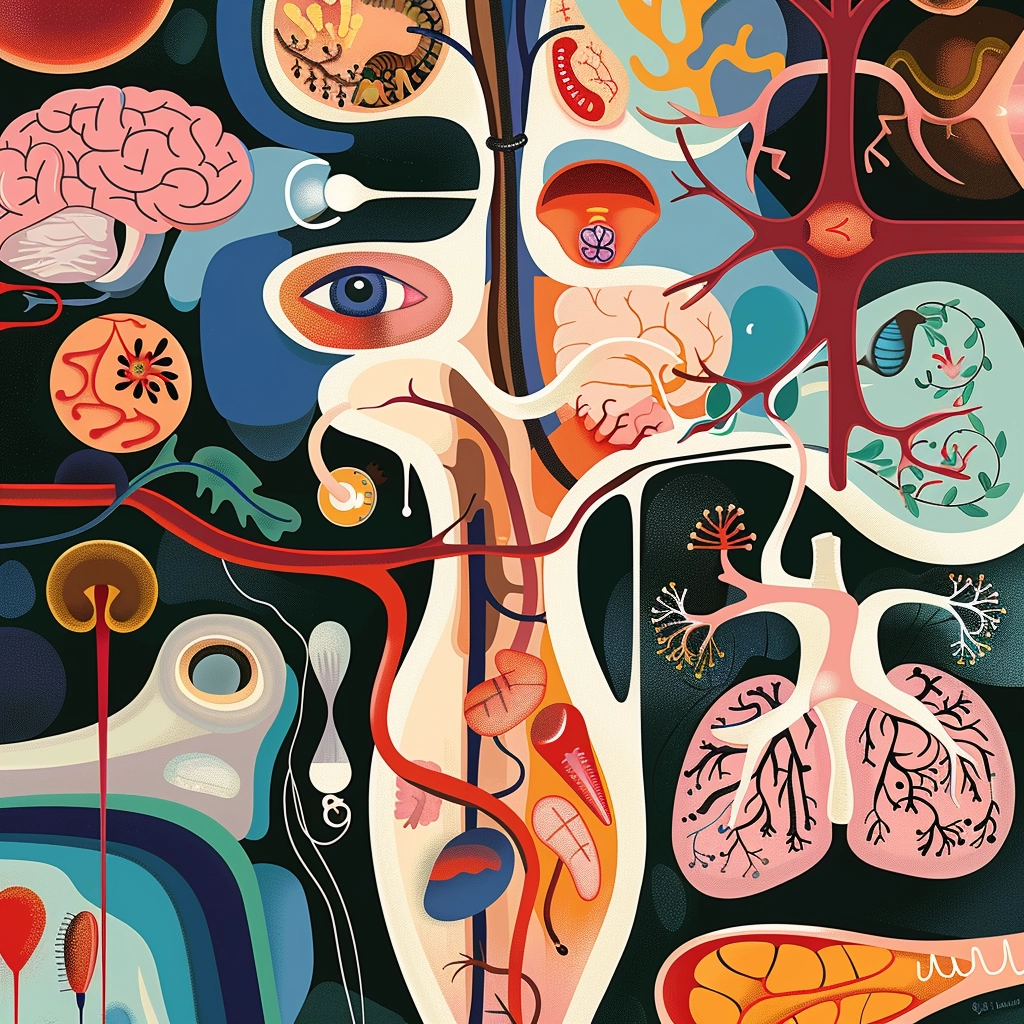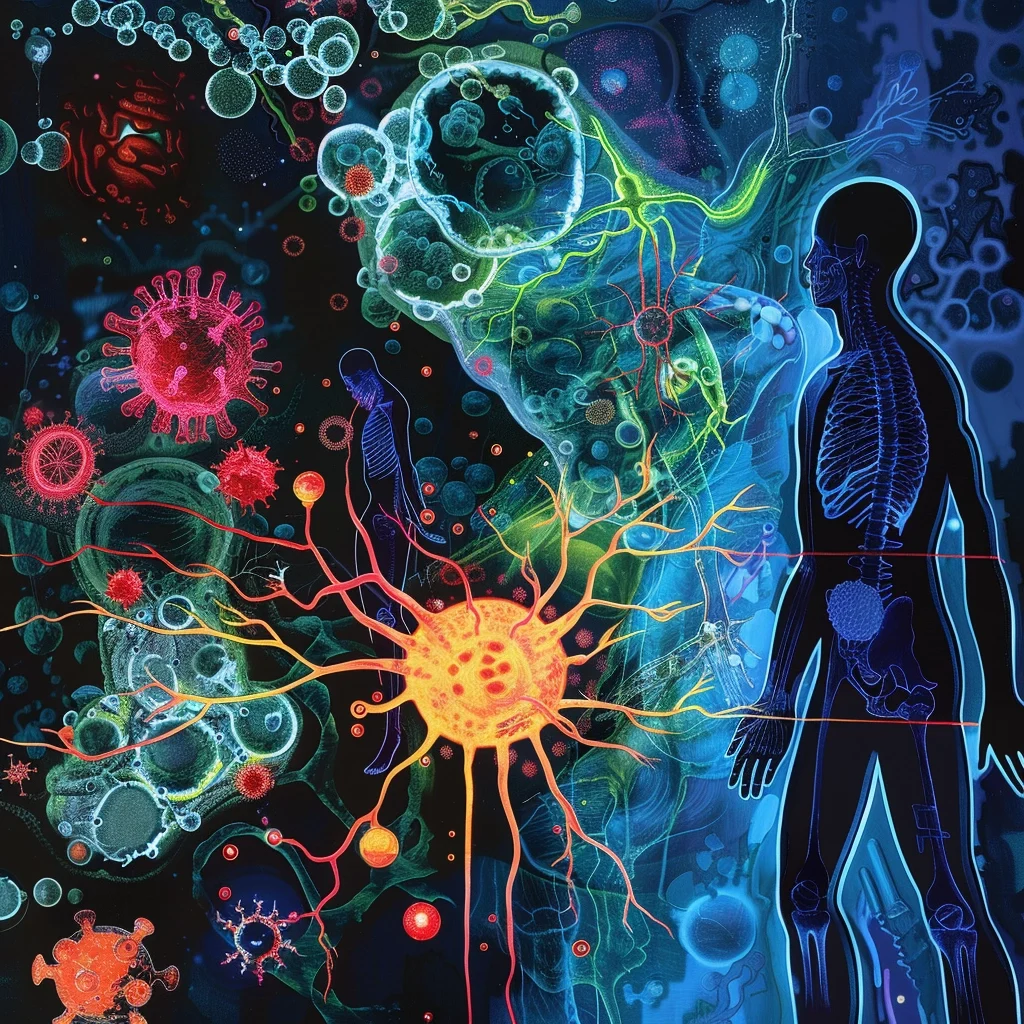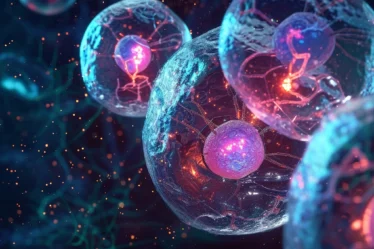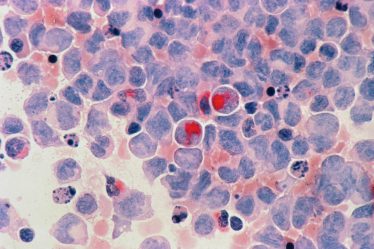
Homeostasis is an important biological principle that ensures stable internal conditions regardless of external changes. This process, essential for health and survival, involves complex interactions between hormones, osmoregulation, and acid-base balance. By regulating body temperature and blood glucose levels, homeostasis supports bodily functions and equilibrium. Understanding how homeostasis works offers insights into the human body’s ability to maintain balance and adapt to environmental challenges.
Homeostasis and Osmoregulation: Key Takeaways
In a hurry? Don’t worry. Our critical takeaways on homeostasis and balance will give you a quick and easy summary of the main points:
🟠 Homeostasis maintains stable internal conditions through osmoregulation and acid-base balance, adapting to external changes.
🟠 Hormones and neurotransmitters regulate bodily functions, including blood glucose levels and body temperature adjustments.
🟠 Effective homeostasis supports overall health by ensuring bodily systems operate within optimal ranges, facilitating adaptation and stability.
If you find homeostasis challenging, don’t worry! Personalized tutoring or interactive biology lessons make these concepts more straightforward. Explore more biology topics and broaden your knowledge with our free Biology blogs.
What is Homeostasis? Let’s Explain the Basics
Homeostasis is a fundamental concept in biology, referring to the body’s ability to maintain a consistent internal environment despite external fluctuations. This dynamic process is crucial for the survival and optimal functioning of organisms. It encompasses various physiological mechanisms, including temperature regulation, pH balance, glucose concentration, and more, all working harmoniously to stabilize internal conditions. The body can detect and counteract deviations from normal states through feedback systems, ensuring that vital parameters remain within narrow limits. This balance is achieved through the coordinated action of organs, tissues, and cellular functions, highlighting the complexity and efficiency of living systems.
Defining Homeostasis
Homeostasis is the body’s regulatory process that keeps internal environments stable, ensuring physiological conditions necessary for survival and function remain constant. This process involves regulating numerous factors, including, but not limited to, body temperature, blood pressure, pH levels, glucose concentration, and electrolyte balance. It employs feedback mechanisms that act through hormonal and neural signals to adjust bodily functions as needed. The effectiveness of these regulatory systems is vital for health, allowing organisms to thrive in varied and sometimes harsh environmental conditions.
The Importance of Homeostasis in Daily Life
Homeostasis impacts health and well-being every day, enabling the body to perform efficiently under different stresses and activities. Whether it’s adjusting to temperature changes, managing stress, or regulating energy use, homeostasis underpins the body’s capacity to handle daily challenges and supports overall physiological stability and health.
Are you curious about chemistry in daily life? Explore our simple experiments you can do at home!
The Role of Hormones in Homeostasis
Hormones are integral to homeostasis, serving as chemical messengers that regulate various bodily functions. Endocrine glands produce these substances and travel through the bloodstream to target organs, initiating responses that maintain internal balance. Hormonal regulation covers many processes, from growth and metabolism to reproductive functions and stress responses. By influencing the activity of cells and organs, hormones ensure the body responds appropriately to internal changes and external stimuli. This system’s flexibility allows it to address immediate needs while preserving long-term equilibrium.
How Hormones Regulate Body Functions
Hormones regulate body functions by binding to specific receptors on target cells, triggering actions that restore equilibrium. For example, insulin and glucagon manage blood sugar levels, while adrenalin prepares the body for “fight or flight” responses. This precise control is critical to maintaining steady states within the body, enabling cells to function effectively in varying conditions. Hormonal signals are thus crucial for the continuous adjustment processes that characterize homeostasis, facilitating adaptation to both minor and significant environmental changes.
Essential Hormones in Glucose and Mineral Balance
Insulin and glucagon are central to glucose balance, working oppositely to regulate blood sugar. Insulin lowers glucose levels by promoting its uptake by cells, while glucagon increases glucose when levels are too low. Parathyroid hormone and calcitonin regulate calcium levels for mineral balance, which are crucial for bone health and cellular functions. Also, aldosterone controls sodium and potassium, which are vital for fluid balance and nerve function. These hormones exemplify the body’s sophisticated regulatory mechanisms, ensuring essential nutrients and minerals are balanced for optimal health.
Explore biochemistry and the differences between organic and inorganic chemistry.
Osmoregulation and Fluid Balance
Osmoregulation, an essential aspect of homeostasis, manages the body’s balance of water and salts, which is crucial for maintaining life’s processes. This regulation ensures that cells operate optimally, safeguarding against dehydration or excess water intake that can disrupt cellular functions. The kidneys are central in this process, filtering blood to control water and electrolyte levels. Through osmoregulation, the body adeptly adjusts fluid volume and ion concentrations, demonstrating the intricacy of internal balance mechanisms. This balance is vital for cellular health and overall physiological wellness, affecting everything from blood pressure to muscle function.
Importance of Osmoregulation
- Maintains Fluid Balance: Ensures that the concentrations of electrolytes (such as sodium and potassium) are balanced within and outside cells.
- Regulates Blood Pressure: By controlling blood volume through fluid balance, osmoregulation indirectly affects blood pressure.
- Supports Kidney Function: The kidneys are central to osmoregulation, filtering excess salts and waste while conserving water.
Mechanisms of Osmoregulation
Osmoregulation involves the kidneys filtering blood to manage water and electrolyte levels. By adjusting the amount of water reabsorbed or excreted, the body can maintain a stable internal environment. Antidiuretic hormone (ADH) plays a critical role, signaling the kidneys to retain water when hydration is low. This delicate balance ensures cells have the proper environment, illustrating the body’s complex regulatory systems to preserve stability across varying conditions.
The Impact of Water and Salt Balance on Health
Maintaining a proper balance of water and salts is essential for health, impacting everything from nerve function to muscle contraction. Imbalances can lead to conditions such as dehydration, hypertension, or hyponatremia, illustrating the importance of osmoregulation in preventing disease. Adequate fluid intake and the body’s natural regulatory mechanisms work together to ensure this balance, highlighting the interconnectedness of bodily systems in sustaining health. Osmoregulation supports cellular activities and contributes to overall vitality, showcasing the critical role of fluid and electrolyte management in the body’s internal equilibrium.
Maintaining Acid-Base Balance
Acid-base balance is crucial for normal physiological functions, as even slight deviations from the normal pH range can hinder cellular processes and enzyme activities. This balance involves regulating the concentration of hydrogen ions in body fluids, particularly blood, to maintain a stable pH level. The body employs buffers, respiratory mechanisms, and renal systems to manage pH levels, illustrating the complexity of homeostasis. Proper acid-base balance supports metabolic processes, enzyme function, and overall health, reflecting the body’s remarkable capacity to sustain internal stability amidst various challenges.
Strategies for Acid-Base Balance Regulation
- Buffer Systems: Quick response to neutralize sudden changes in blood pH.
- Respiratory Regulation: Adjusts the rate of CO2 removal to control acidity.
- Renal Mechanisms: Kidneys excrete or retain bicarbonate and hydrogen ions to maintain pH balance over extended periods.
Understanding Acid-Base Homeostasis
Acid-base homeostasis refers to regulating the concentration of hydrogen ions in bodily fluids, ensuring a stable internal pH. This balance is vital for maintaining enzyme activities and biochemical reactions that are essential for life. The body’s buffering systems quickly neutralize excess acids or bases, highlighting the efficiency of physiological mechanisms designed to maintain equilibrium. Understanding this balance is key to appreciating how the body preserves optimal conditions for health and functionality.
The Body’s Strategies for pH Regulation
The body regulates pH through three main strategies: buffer systems, respiratory control, and renal regulation. Buffers immediately counteract pH changes while the respiratory system adjusts carbon dioxide levels to control acidity. The kidneys further fine-tune blood pH by excreting or retaining hydrogen and bicarbonate ions. These mechanisms work together to ensure the body’s internal environment remains conducive to vital functions, showcasing how the body maintains acid-base balance.
Regulation of Body Temperature
The regulation of body temperature is a critical aspect of homeostasis, allowing humans to maintain their core temperature within a narrow range suitable for optimal cellular function. This thermal regulation is achieved through various physiological responses adjusting to internal metabolic changes and external environmental conditions. Mechanisms such as sweating, shivering, vasodilation, and vasoconstriction enable the body to either dissipate heat during warm conditions or conserve heat when it’s cold. The hypothalamus, a part of the brain, acts as the control center, orchestrating these responses to keep body temperature steady, showcasing the body’s adaptive strategies to sustain life.
How the Body Adjusts to Temperature Changes
The body adjusts to temperature changes through a series of automatic responses. When it’s hot, sweating occurs, and blood vessels near the skin’s surface widen (vasodilation) to release heat. In cold environments, shivering generates heat, and blood vessels narrow (vasoconstriction) to retain warmth. The hypothalamus regulates these responses, detecting temperature shifts and triggering appropriate actions to maintain the body’s core temperature. This illustrates the dynamic nature of homeostasis in thermal regulation.
The Significance of Thermal Regulation
Thermal regulation maintains the conditions necessary for the body’s biochemical reactions and physiological processes. Proper body temperature supports practical metabolic functions, enzyme activities, and overall health. Thermal regulation plays a fundamental role in supporting vitality and enabling humans to thrive in diverse environments by ensuring the body operates within an optimal temperature range.
Don’t forget to read all about mitosis and meiosis.
The Connection Between Neurotransmitters and Homeostasis
Neurotransmitters are crucial in maintaining homeostasis. They act as the body’s chemical messengers, transmitting signals across nerve cells to regulate various physiological functions. Neurotransmitter balance bodily processes, from mood regulation and sleep cycles to heart rate and digestion. By facilitating communication between neurons and other cells, neurotransmitters ensure the body responds appropriately to internal and external changes, maintaining equilibrium. This intricate system exemplifies the body’s adaptive capabilities, demonstrating how neurotransmitters contribute to organisms’ overall stability and health.
Role of Neurotransmitters in Body Equilibrium
Neurotransmitters maintain body equilibrium by regulating nervous system activity, which influences physical and psychological functions. They enable neurons to communicate, ensuring the body adapts to changes and maintains a stable internal environment. For instance, neurotransmitters are involved in the fight-or-flight response, preparing the body to face stress or danger. Their balance is essential for homeostasis, highlighting the interdependence of neurological function and bodily health.
Examples of Neurotransmitter Functions
Serotonin regulates mood, appetite, and sleep, prevents depression and promotes well-being. Dopamine influences reward and pleasure centers, affecting motivation and pleasure. Acetylcholine is involved in muscle activation and memory, while adrenaline boosts heart rate and energy in response to stress. These examples underscore the diversity of neurotransmitter functions and illustrate their significance in maintaining homeostasis by regulating vital bodily functions and responses to environmental stimuli.
What is a hypertonic solution?
How to Learn About Homestasis and Regulation?
In exploring homeostasis, we’ve learned how this vital process ensures the stability of our internal environment, allowing for optimal health and function. Through lessons on hormonal regulation, osmoregulation, and the acid-base balance, we’ve seen the body’s remarkable capacity to maintain equilibrium. The regulation of body temperature and neurotransmitters’ role further highlights this biological system’s complexity.
Like having a private teacher, this knowledge enriches our understanding of human physiology. Tutoring on such topics provides invaluable insights, showing how our bodies adeptly manage various functions to sustain life.
If you’re searching for a biology tutor, a quick search for “biology tutor Liverpool” or “biology teacher Birmingham” on platforms like meet’n’learn can connect you with the ideal private teacher for your educational journey.
Those preferring group learning settings can find biology classes in their area by looking up “biology classes Leeds” or “biology lessons London” online, leading to community colleges or educational workshops.
Homeostasis: Frequently Asked Questions
1. What is Homeostasis?
Homeostasis is the body’s process of maintaining a stable internal environment despite external changes.
2. How Do Hormones Affect Homeostasis?
Hormones regulate homeostasis by acting as messengers influencing bodily functions to maintain internal balance.
3. What Role Does Osmoregulation Play in Homeostasis?
Osmoregulation maintains fluid balance, which is crucial for the body’s homeostatic regulation of water and salts.
4. Why is Acid-Base Balance Important for Homeostasis?
Acid-base balance is essential for homeostasis as it ensures the pH levels of bodily fluids are kept within a narrow range.
5. How is Body Temperature Regulated in Homeostasis?
Body temperature is regulated through mechanisms such as sweating and shivering, which are crucial for maintaining homeostasis.
6. What is the Connection Between Neurotransmitters and Homeostasis?
Neurotransmitters facilitate communication between neurons, which is important in maintaining homeostasis by regulating bodily functions.
7. How Can Tutoring Help Understand Homeostasis?
Tutoring can offer personalized lessons and insights, enhancing understanding of the complex processes involved in homeostasis.
8. Can Homeostasis Be Affected by External Factors?
External factors like temperature and diet can affect homeostasis, challenging the body to adapt and maintain equilibrium.
References:
1. Britannica
2. Khan Academy
3. Wikipedia



